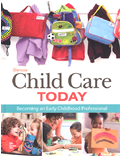
Child Care Today ©2012Chapter 5: Health, Safety, and Emergency ResponseChapter SummaryHealthy children have the foundation they need for learning and development. Healthy children will occasionally have mild illnesses. Child care facilities need a complete copy of a child’s health records, which are confidential. Every child and staff member should have emergency forms on file. Contagious conditions can be passed from person to person. You must use universal precautions to protect yourself from infectious disease and limit its spread. Protect children from weather-related illnesses based on extreme heat or cold. Daily health checks can help staff spot health problems early. Children with a contagious condition should be restricted from attending child care. Some illnesses should be reported, and parents should be informed. Follow state licensing laws regarding dispensing medicine. Some children have health conditions that require special attention. These conditions include allergies, asthma, diabetes, drug exposure, giardiasis, head lice, and HIV/AIDS. The Americans with Disabilities Act (ADA) protects children’s rights to be enrolled in child care whenever reasonably possible. The most important safety consideration in group child care is adequate and continuous supervision of children. Children are exposed to indoor and outdoor hazards, and teachers must make sure the environment is safe. Facilities should have a safety policy that includes risk management plans, fire evacuation drills, and severe weather and disaster drills. Prevent accidents and injury by anticipating problems. Have documentation for injuries, suspected abuse, child release, and emergency treatment. Staff health and safety must be ensured. Staff members should submit a physician’s report verifying good health, and should obtain first aid and CPR certification. Child care facilities should have substitute staff lists. All food service employees should be certified in food safety. Child care staff must know how to treat minor and serious injuries, including rescue breathing, cardiopulmonary resuscitation (CPR), automated external defibrillation (AED), and accidental poisoning. Hold regular emergency drills to prepare for emergency evacuation. |  |















